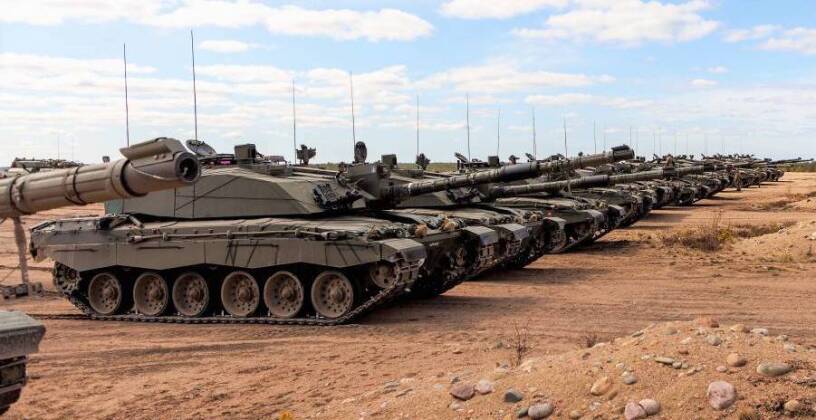News
Britain to Send Apache Attack Helicopters to Ukraine: Major Escalation to High End Arms Transfers
British press reported on February 15 that the country was set to deliver AH-64 Apache attack helicopters to the Ukrainian Military, with anonymous defence sources cited. The report came less than a day after Prime Minister Rishi Sunak confirmed that Challenger 2 battle tanks would be sent to equip the Ukrainian Army, which was itself a groundbreaking development marking the first transfer of third generation Western tanks to the country. While the provision of Challengers is expected to be followed by much larger transfers of German-produced Leopard 2 tanks, an older but broadly comparable vehicle which is much more widely fielded by NATO members, provision of Apaches would mark a significantly greater escalation and introduce genuinely new capabilities to the Ukrainian Military. The Apaches will reportedly be delivered after the Challengers, with four set to make up a first batch, although much like the tanks they are similarly expected to be held back from the frontlines and be used primarily for training for the foreseeable future. The aircraft will be armed with Hellfire anti tank missiles, with the possibility of additional armaments not having been disclosed. Britain’s lead in arming Ukraine comes as the country has stood out even among NATO members in the degree of general support provided for Kiev’s war effort, with British Deputy Chief of Defence Staff Lieutenant General Robert Magowan having revealed in December that hundreds of Royal Marines had been carrying out high risk operations in the country since April. This confirmed prior allegations by Russian sources to the same effect, with British volunteers, intelligence operatives and other personnel having also played prominent roles.

While analysts and have widely highlighted that Ukraine could struggle to integrate Western tanks, with differences in training, weaponry, fire controls and in particular maintenance all meaning that the vehicles may not be viable for frontline deployments for a very long time, this applies far moreso to attack helicopters which are much more complex. Apaches are estimated to cost well over ten times as much as Challenger 2 tanks, are more maintenance intensive and have far higher operational costs. There thus remains a significant possibility that they will be operated and maintained by contractors rather than Ukrainian personnel, which is a possibility that has also been speculated for other high end new assets such as American Patriot missile batteries. The viability of deploying attack helicopters to the theatre remains in serious question, as while the ground war is still hotly contested Russia retains undisputed superiority in the air and has taken a very heavy toll on Ukrainian air units including fighters, drones and helicopters using both air defence systems and its own fighters and interceptors.

The Apache is considered to be by far the most capable attack helicopter in the Western world, closely rivalled by the Russian Ka-52, Mi-28, and enhanced variants the Mi-24, although it has not seen high intensity combat against well armed state actors in the past. Although integrating terrain following sensors and capable of low level flight, which would limit the ranges at which they could be tracked by ground based radars, the slow and heavy Apaches will be particularly vulnerable to air to air missile attacks with the Ukrainian Air Force having limited capabilities to provide protection. Despite this, the possibility of a very conservative Apache delivery for deployments solely in Western Ukraine, and possibly even limited to Ukrainian units training abroad such as those in Poland or Germany, could reduce the risk of tarnishing the helicopter’s reputation with combat losses. The intention of Apache deliveries may well be to prepare the Ukrainian Military to quickly integrate them into frontline roles once current hostilities are over, which may also be the case for the Challenger 2, as the possibility of a ceasefire or even an armistice before the end of the year has been widely speculated.
Update: The British Defence Ministry has since denied reports of transfers of Apache helicopters to Ukraine, with a number of local news outlets having deleted the story from their websites.












